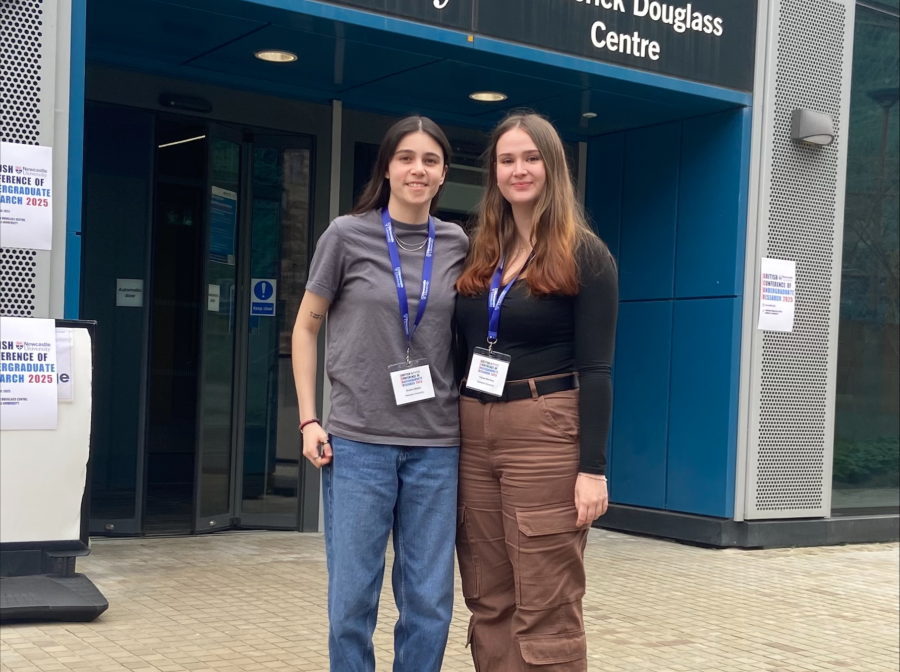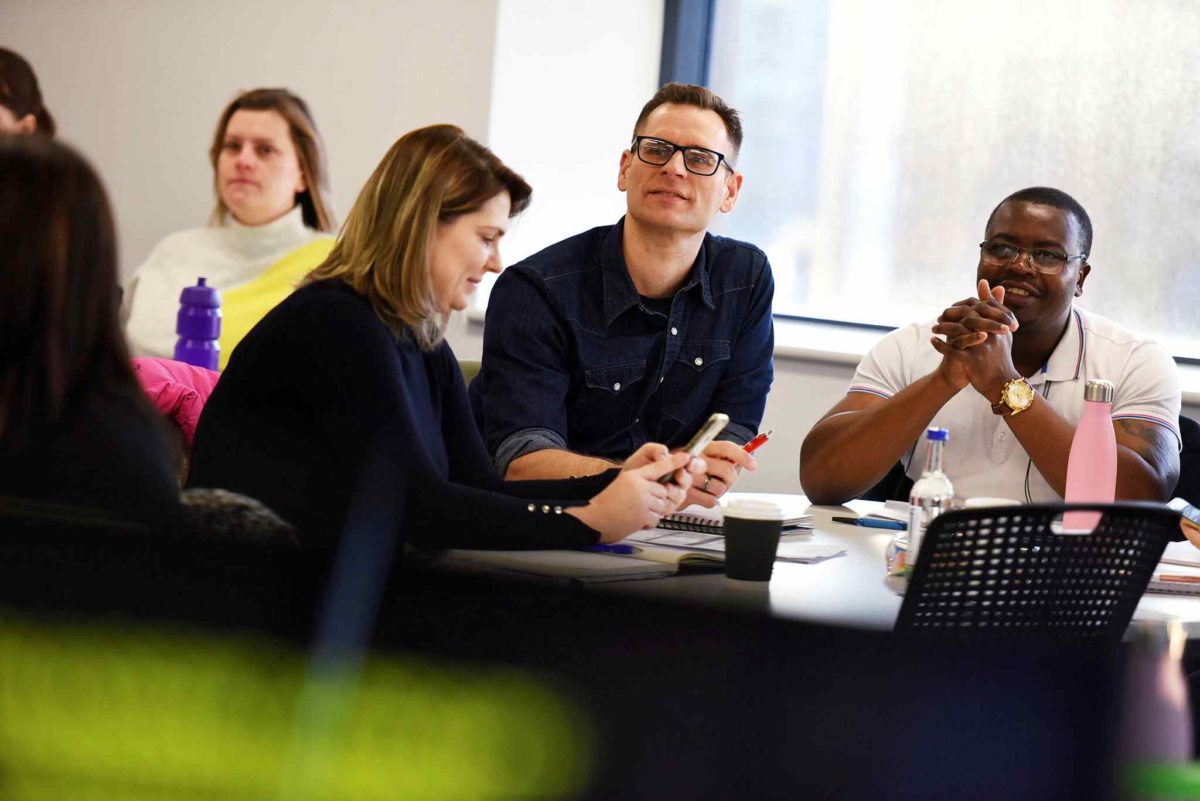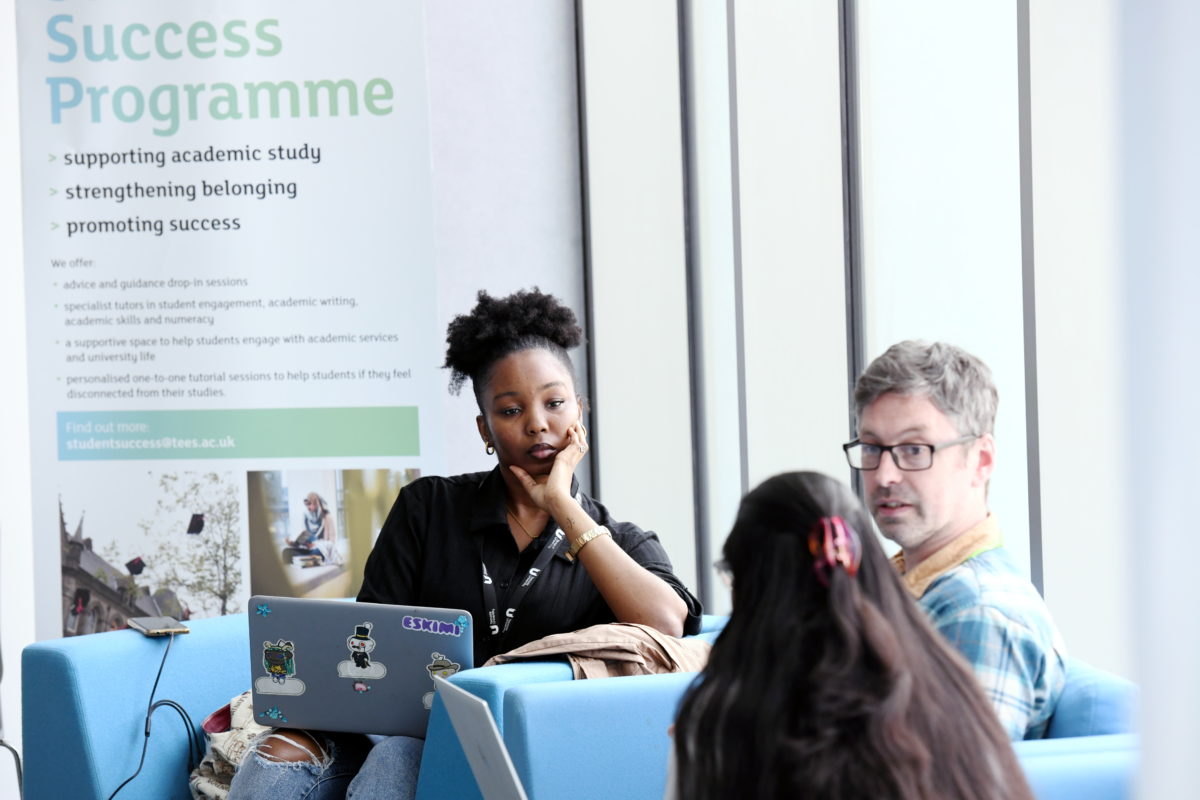Emma Watts and Chloe Mortley, students studying our forensic science degree, were recently accepted to present their third-year project work at BCUR 2025 (British Conference of Undergraduate Research) in April. Hear about their experiences below.
“My third-year science research project was to understand how cotton and acrylic transfer under standardised conditions. I chose this due to the lack of research in the forensic field on fibre transfer using standardised pressure, so my research allowed me to understand if pressure is kept the same whether the same number of fibres will be transferred each time. This then allowed me to understand why fibres transfer differently from different garments and suggest reasons why, to aid the forensic investigator. I spent many hours in the forensic lab transferring fibres and counting them using a low-power microscope, gaining lab experience, skills, and techniques, and growing my confidence.
While writing the journal article, I improved my time management, independence and report writing. I also gained opportunities to share my work at the School of Health & Life Sciences poster day, and Chloe and I were lucky enough to present at BCUR in Newcastle. This allowed us to combine our research and present at an international multi-disciplinary conference, where we also got to listen to other presentations and learn about undergraduate research from around the world.
These experiences really helped with confidence and independence when heading towards the end of university, so I am honoured to have had these opportunities and undertake this research project. The support I received has been incredible and will shape my time at university and my career moving forward, so a massive thank you to everyone involved.” Emma, third-year BSc (Hons) Forensic Science student
“For my third-year science project, I looked at how wool and polyester transfer under a standardised pressure. The main aim was to see if there was a relationship between maintaining a standardised pressure and the number of fibres transferred from each fabric type, and to derive trends for applicational use within the forensic field. This research involved dedication to the lab setting, focusing on the use of microscopes and standard lab protocols. I gained confidence in my knowledge of the use of fibres within a forensic context and improved my independence in researching and report writing.
I have had the chance to share my experiences both at the poster day talking to peers about my research, and most recently presenting at BCUR. This was a multi-disciplinary international conference with other undergraduates, which allowed me to explore and talk to others about the diverse range of research being done. I am thoroughly grateful for the opportunities Teesside has supplied and for the help of my supervisor for the support and encouragement throughout my studies.” Chloe, third-year BSc (Hons) Forensic Science student
“It’s a great achievement for Chloe and Emma to present their research on the transfer of fibres at the BCUR. Forensic sciences play an important role in the fight against crime – research such as this helps improve our understanding of forensic evidence types, contributing to forensic science in a positive and proactive manner.” Ian Parker, BSc (Hons) Forensic Science course leader



